Hand Drawn & AI-Generated Reading Lists
2021-ongoing
Dylan Yamada-Rice
The aim of this work was to find ways of engaging art and design students in academic reading, and to explore further how making allows us to engage differently with academic texts and theories. I started out simply illustrating key parts of core texts, such as the in the following example of drawings related to Tsing, A. L. (2015) The Mushroom at the End of the World: on the possibility of life in capitalist ruins.
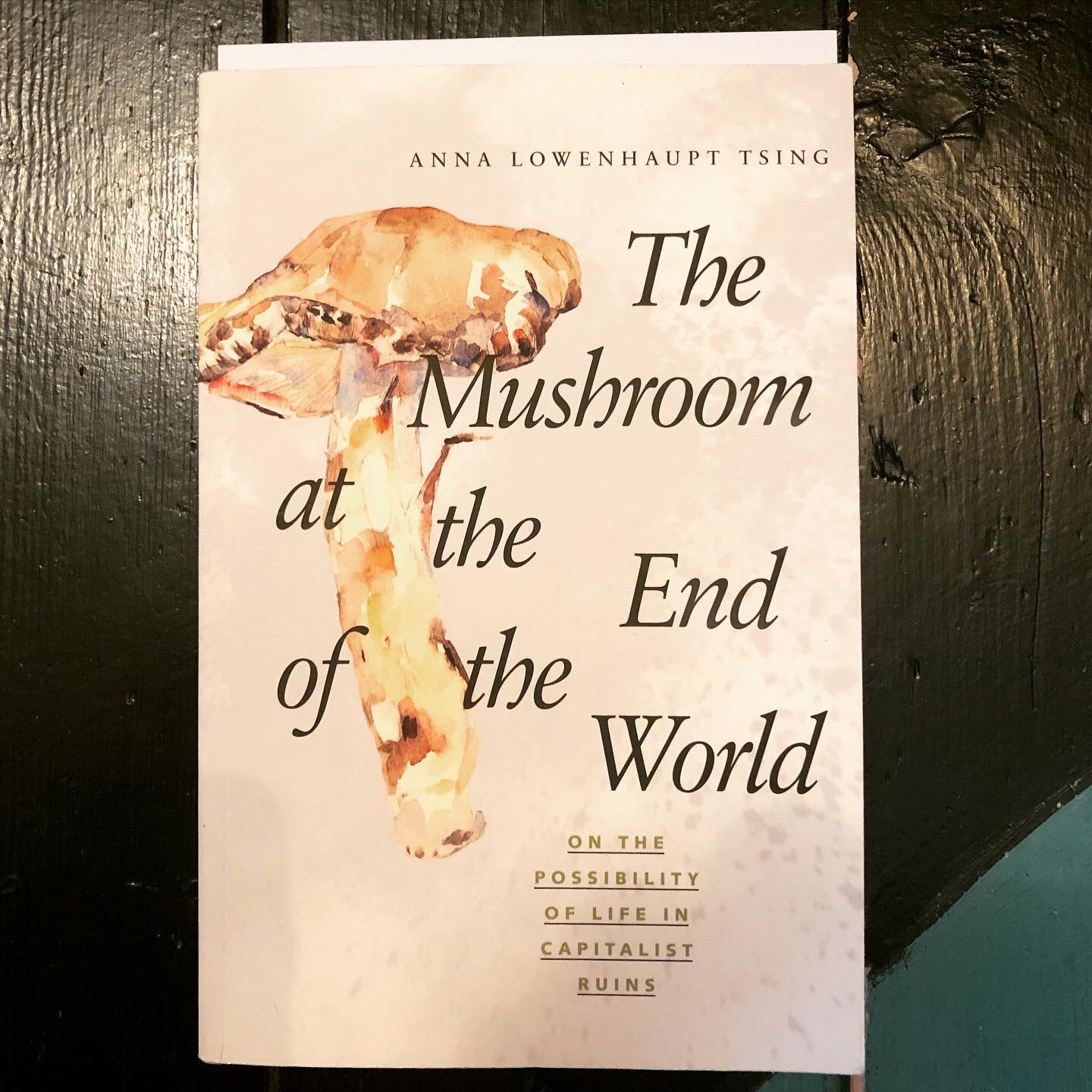
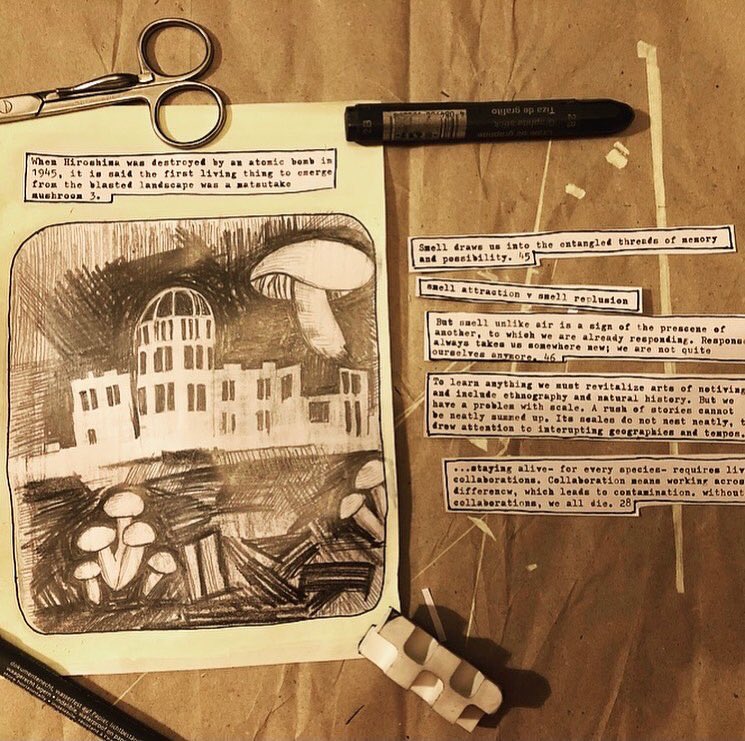

In deciding how to limit the number of illustrations I would make to respond to an academic text I recalled the Japanese comic format of yonkoma that tells a complete story in four panels. I thought the ideas could works with MA interdisciplinary art students buy asking them to narrow their reflections to four parts of a text that resonated with them that was then in turn used as a prompt to create four reflections in one medium of their choice, thus loosely keeping the idea of 4 panels even if students choose to make 4 pieces of sounds design or 4 animated GIFs etc.
In initially exploring this idea I looked for a medium that could be used quickly and disseminated to students in a way that sat outside of formal online learning platforms that many of them seemed to find off putting. In doing so, I created for panels to respond to:
Rautio, P. (2013) Children who carry stones in their pockets: on autotelic material practices in everyday life. Children’s Geographies.
Then, used the standard templates within the social media platform Instagram as a means of dissemination.


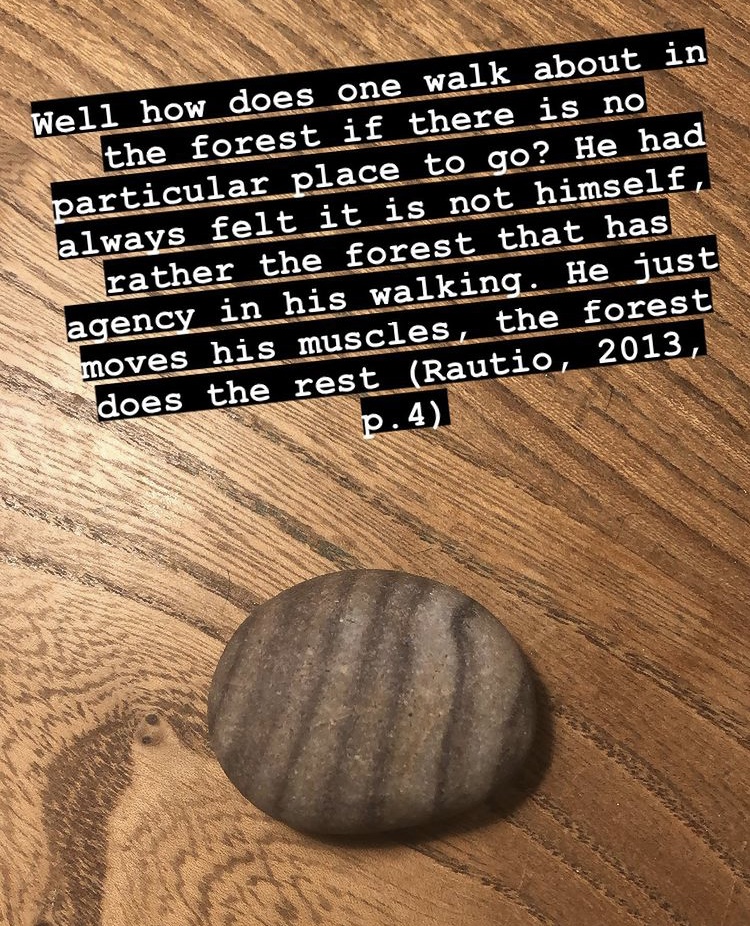

At the next stage I became interested in automation. What if I was to shuffle the illustrated quotes to try and find unexpected new connections between them? Could this serendipity promote new ideas and connections to the academic literature I was reading and asking MA students to read? I prototyped this by creating a deck of four wooden cards containing hand illustrations on one side and typed quotes on the other. These could be shuffled to explore connections between quotes and images, images and images or quotes and quotes etc.
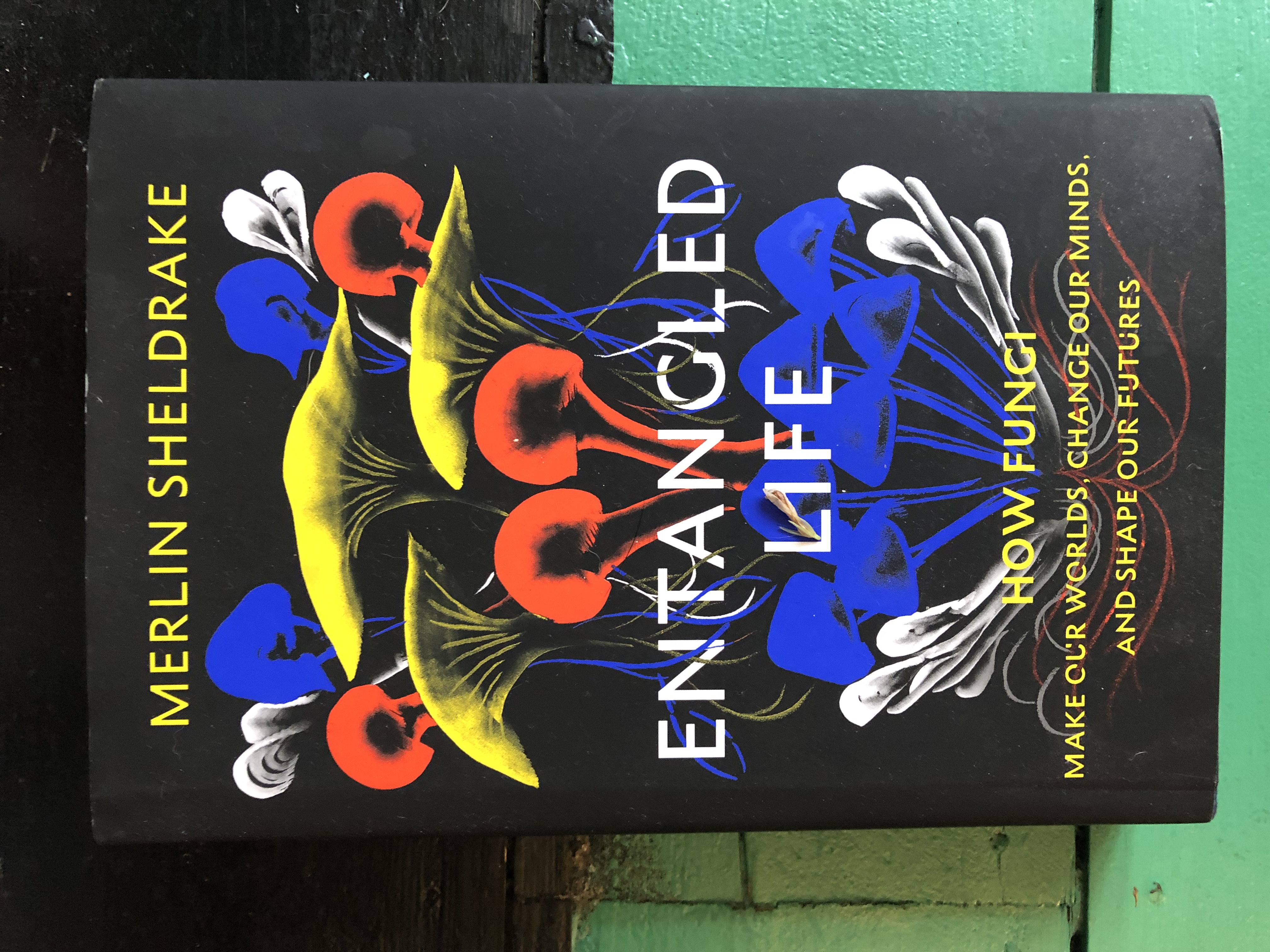
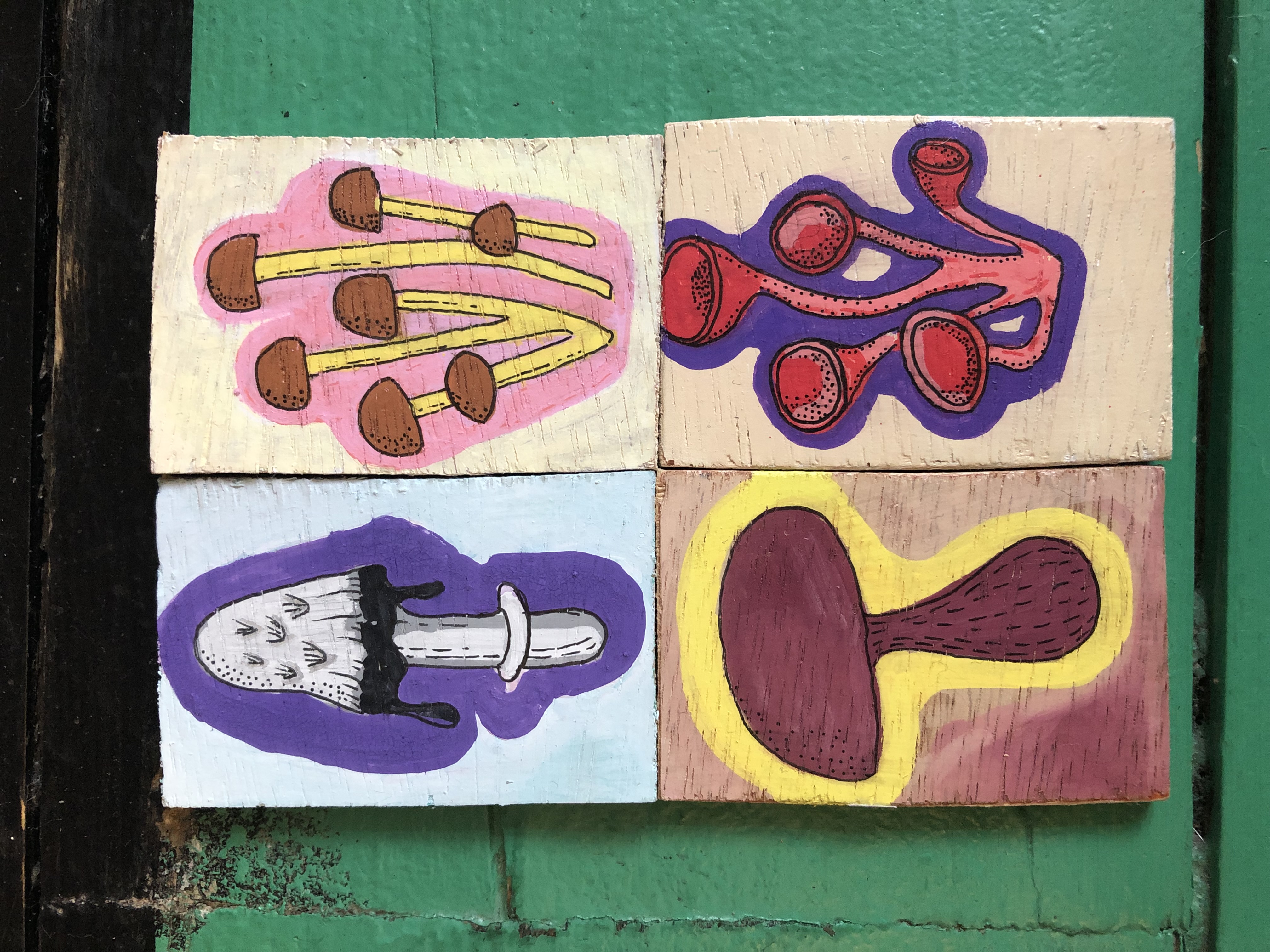

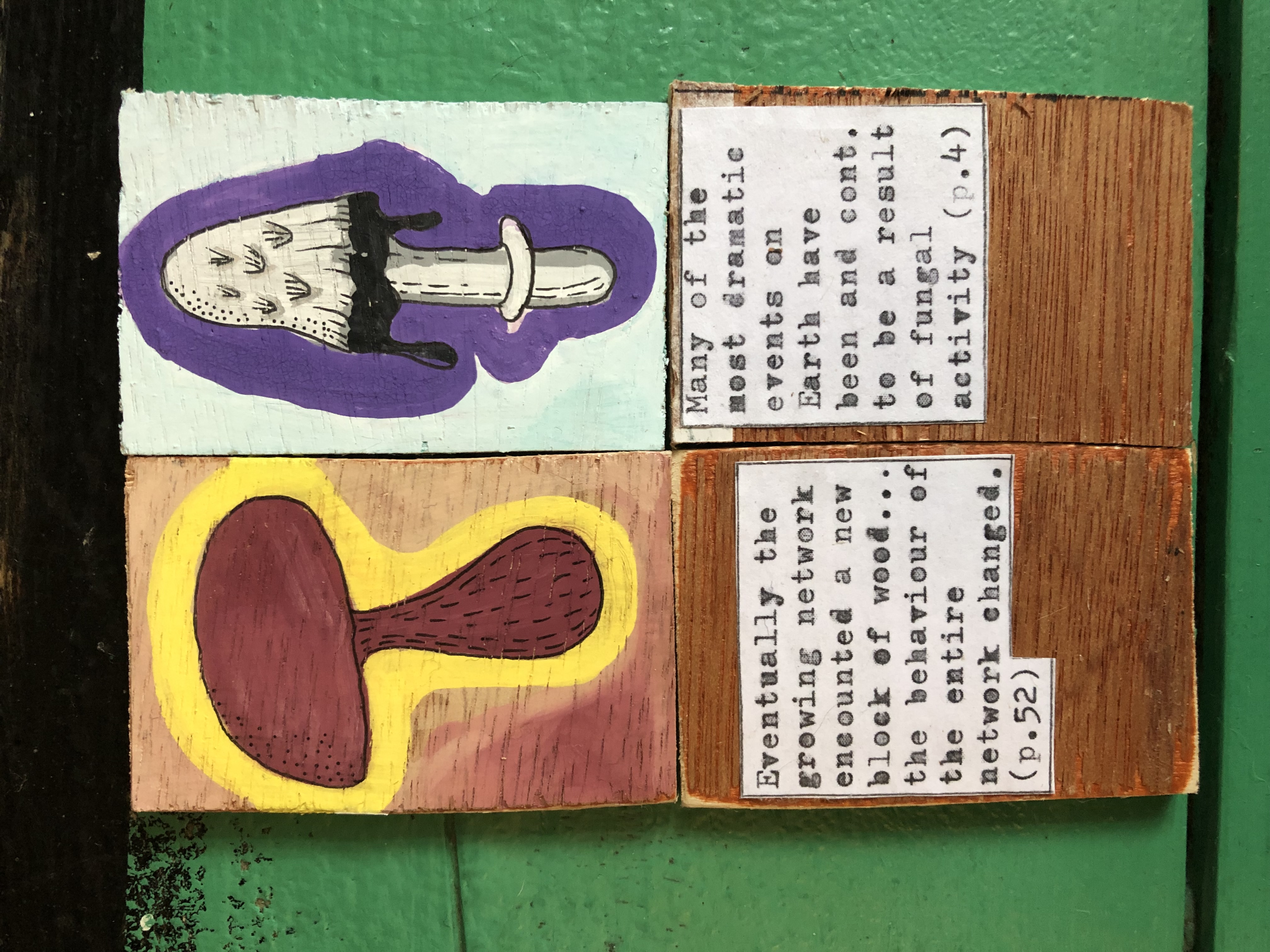

Images: Marker pen on wood (Yamada-Rice)
I further explored using stop motion animation to illustrate the shuffling and random connections.

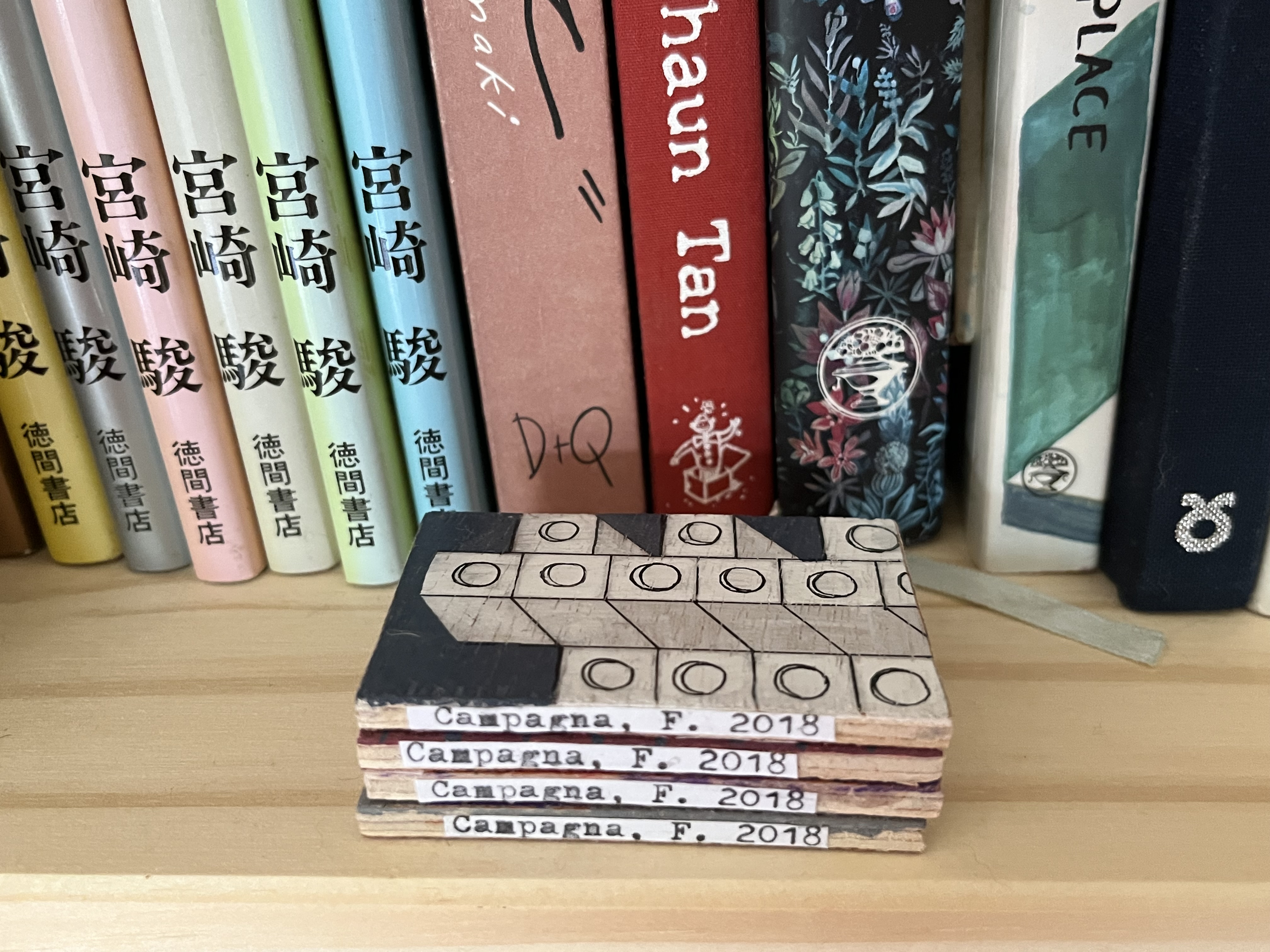

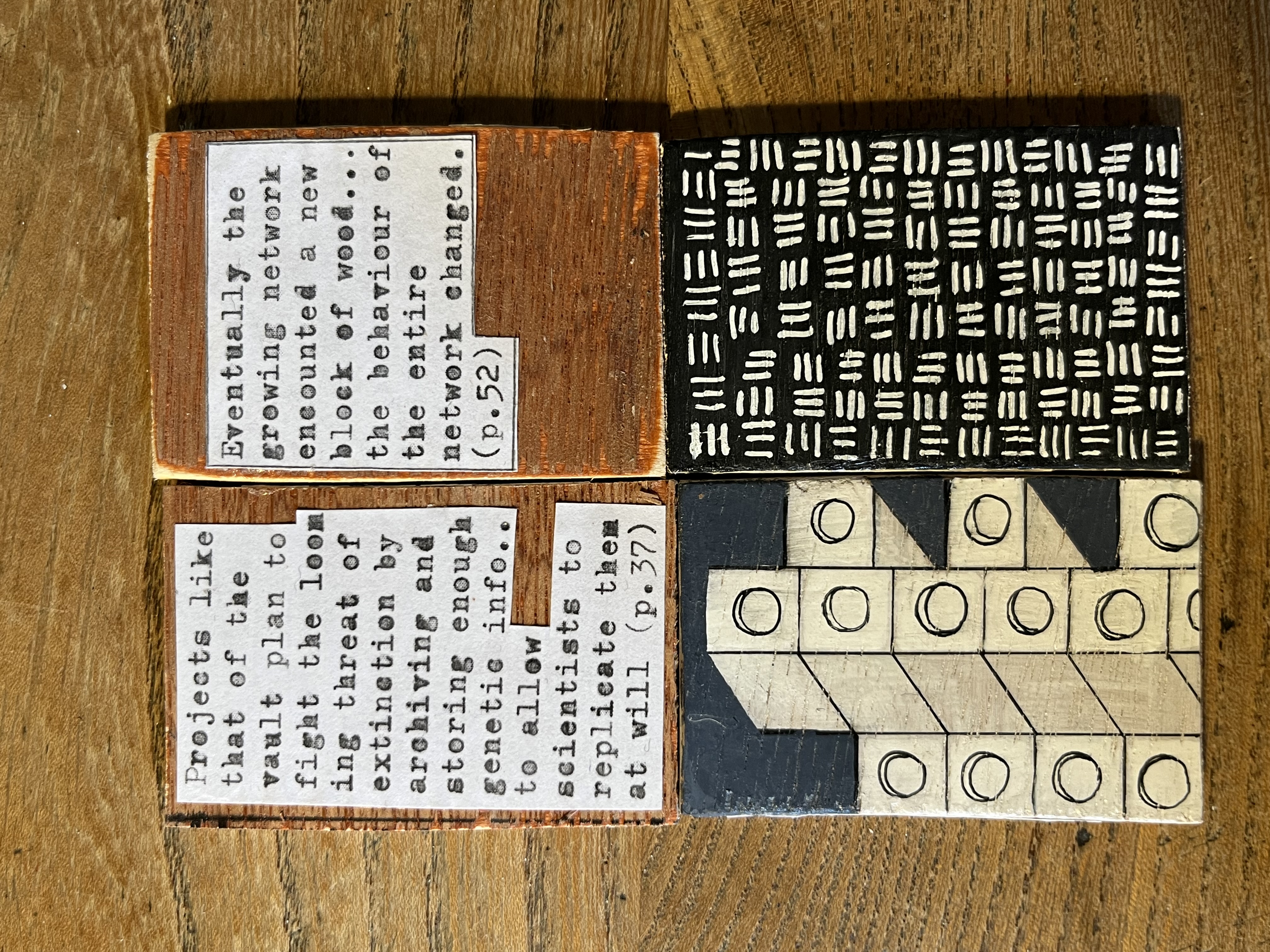
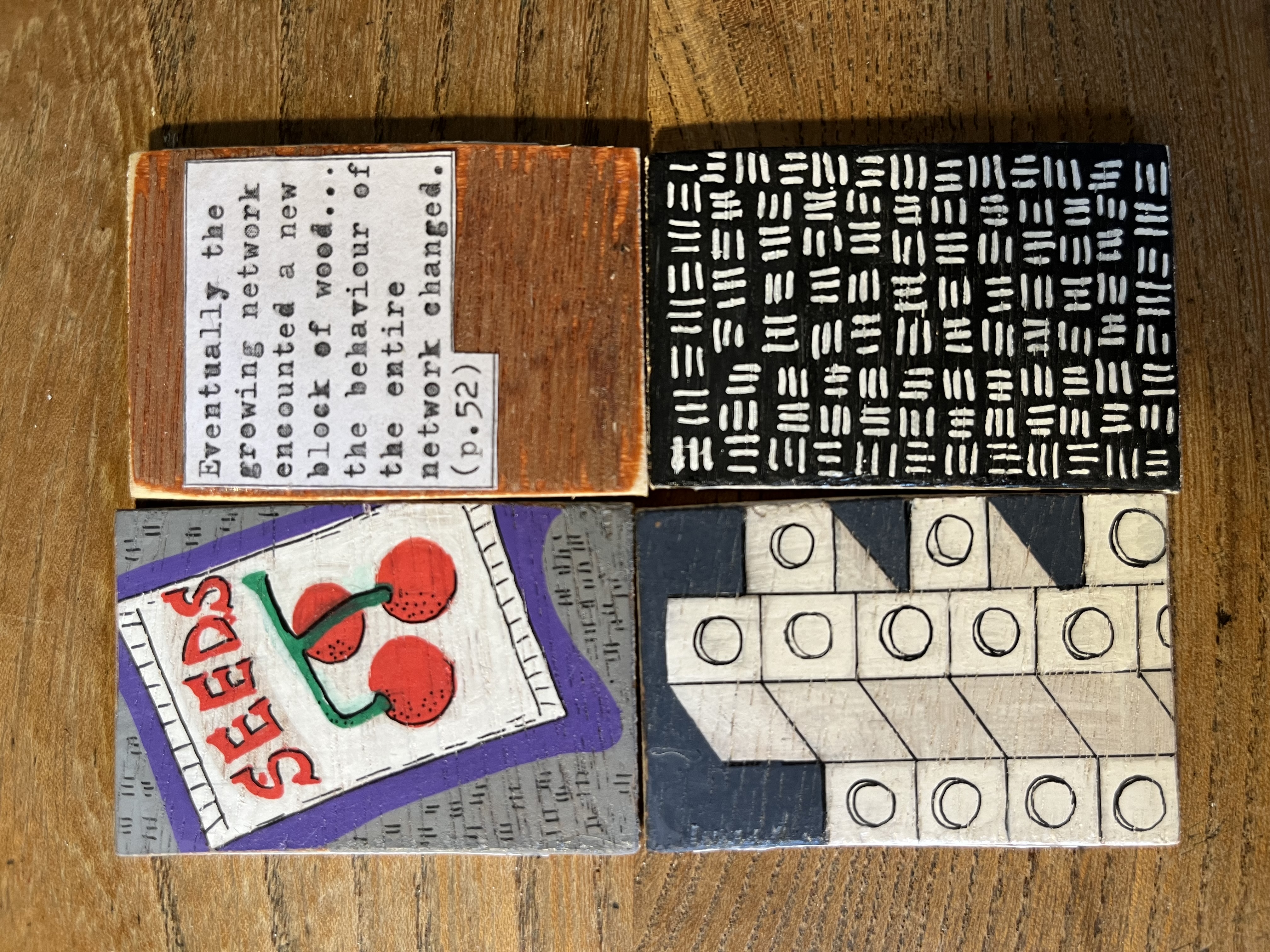
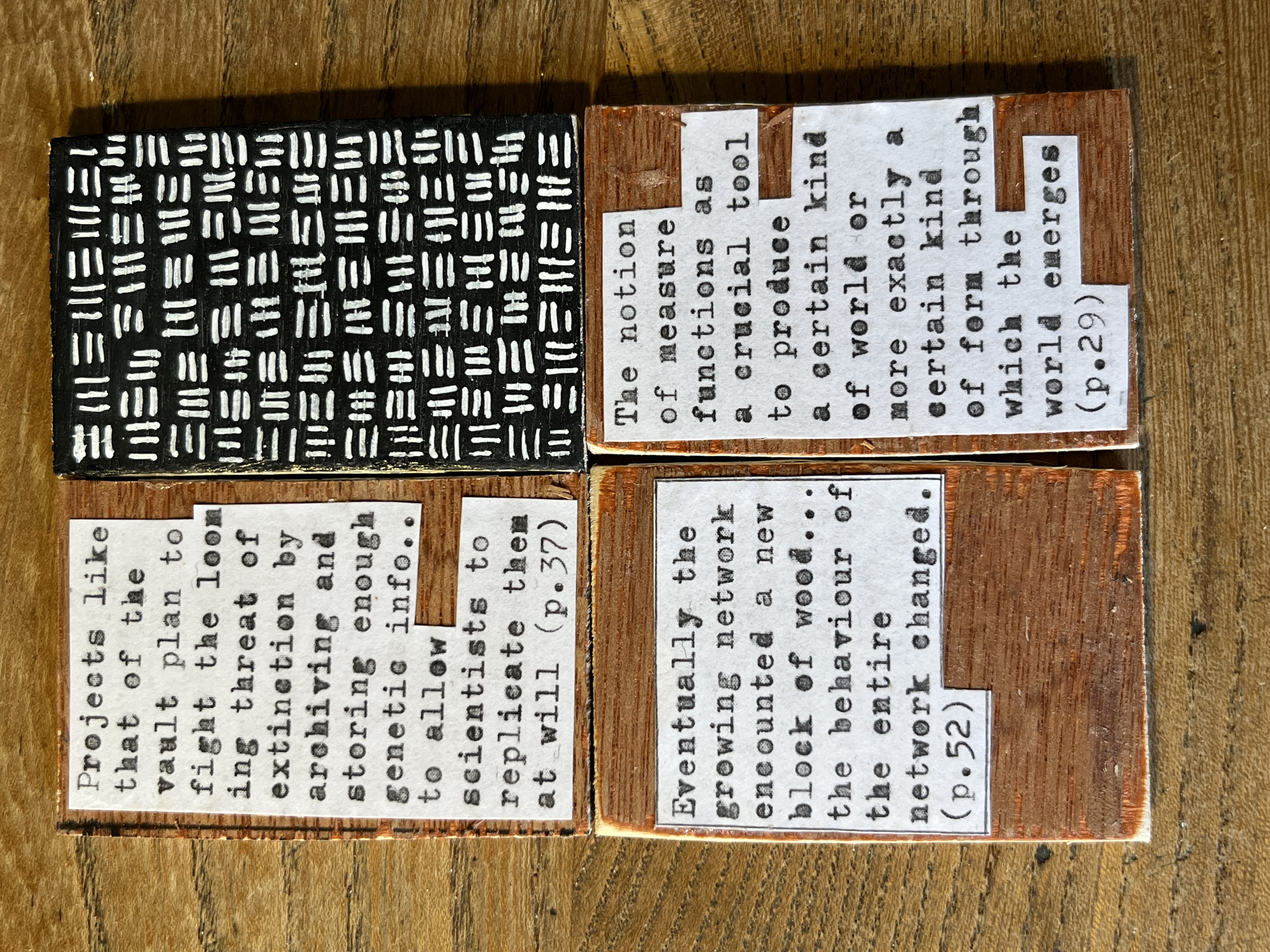
Images: Marker pen on wood (Yamada-Rice)
Further down the line, I experimented with ideas from Merlin Sheldrake’s Entangled Life further by creating an interchangeable network of technology and fungi. Drawing on the idea of shuffling and matching first thought about with the wooded cards.
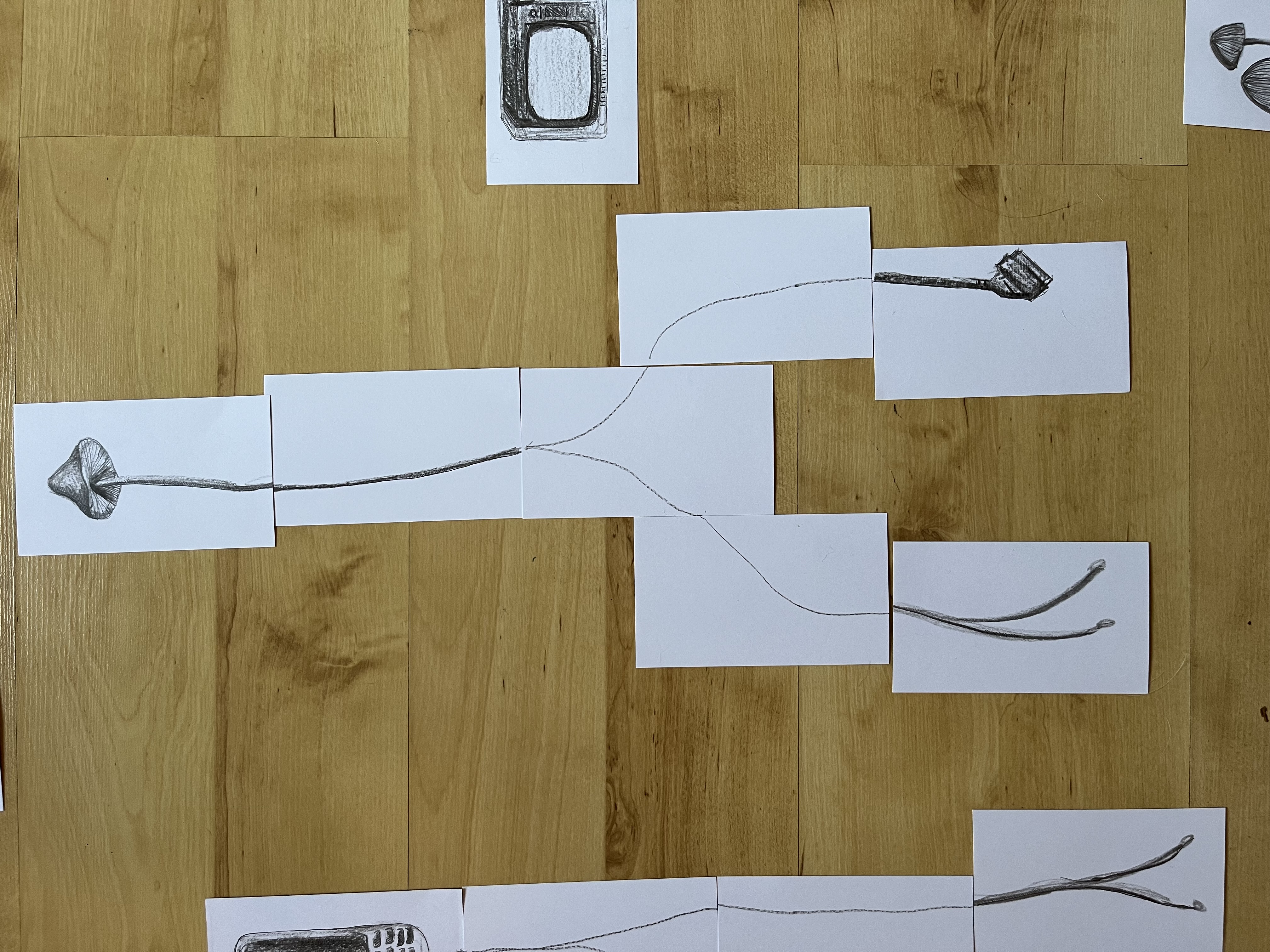
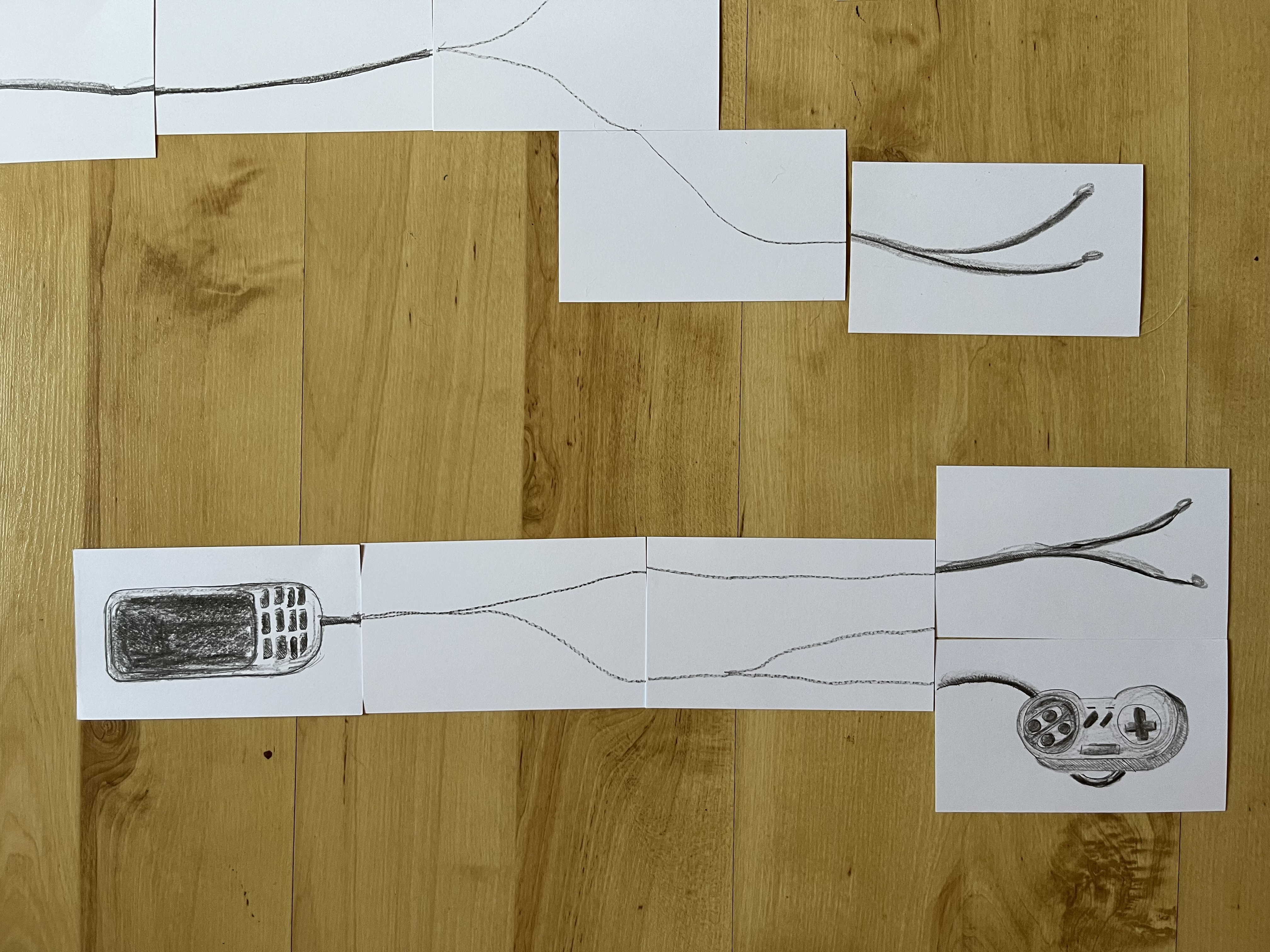
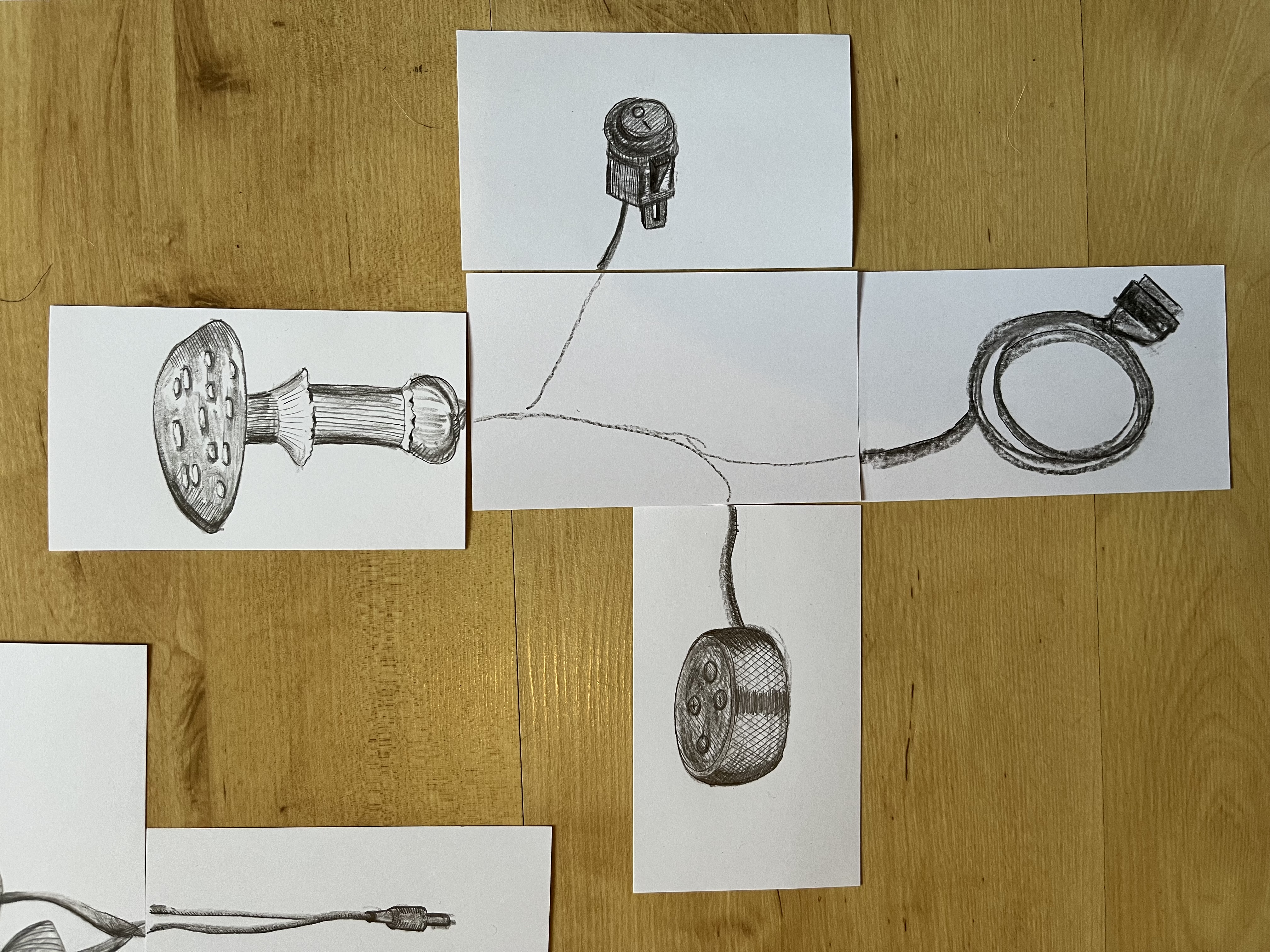
Images: Crayon and pencil on postcards (Yamada-Rice)
From this I started exploring other possibilities for making random connections and used an AI image generator to produce content using quotes from academic literature the following examples are once again from:
Tsing, A. L. (2015) The Mushroom at the End of the World: on the possibility of life in capitalist ruins.


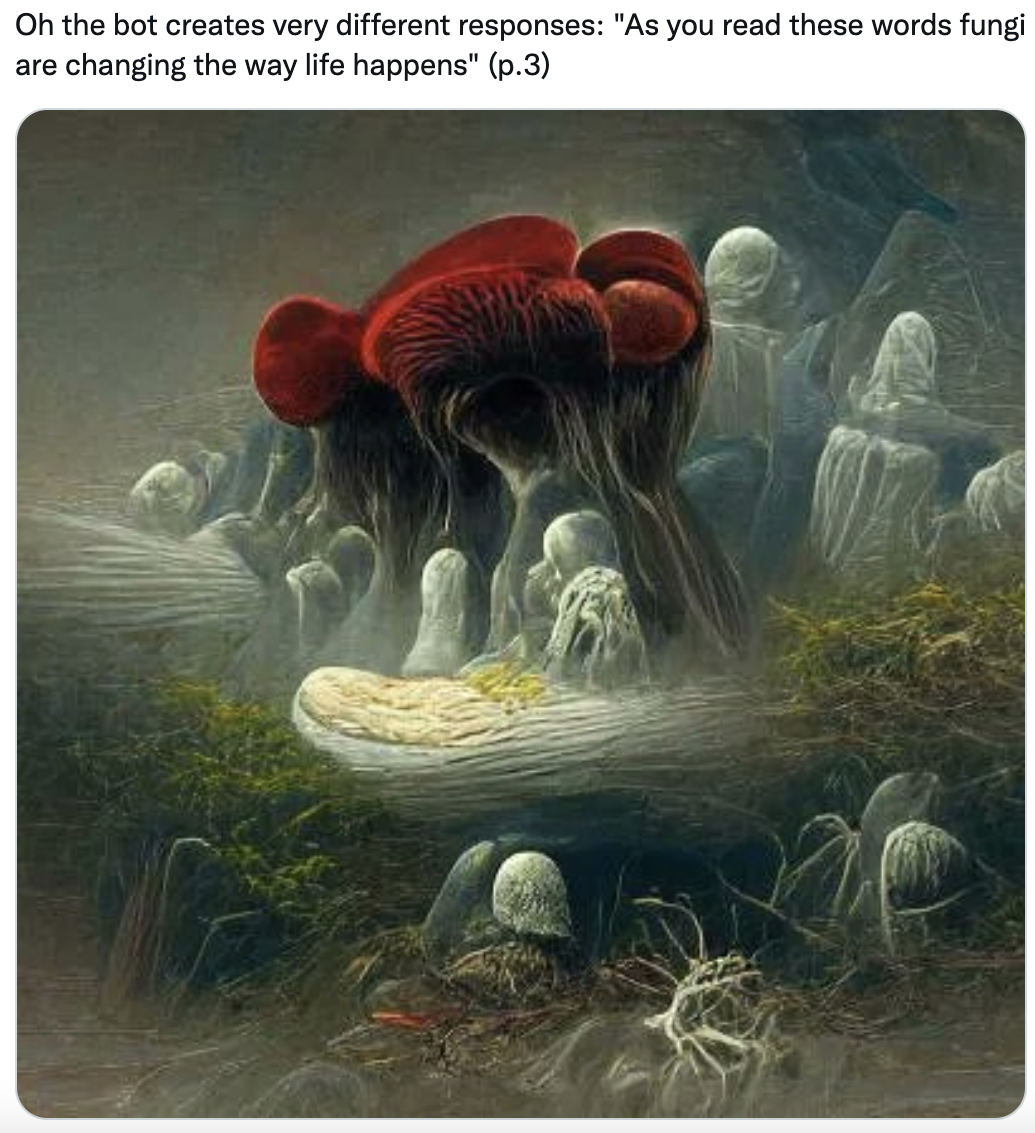

Staying with the use of AI, but having read literature on the ethics of machine learning I was keen to remain in the process as an artist and combine my own drawing alongside AI. In doing so, I explored how my understanding of academic literature shifted slightly as both AI and myself manipulated the images generated as a response to the quotes.
For example, in the four panels below I used quotes from Alex Head’s “Here Comes Trouble: A inquiry into Art, Magic and Madness as Deviant Knowledge”. As I fed quotes from Head into AI I had to make decisions to synthesize the text to generate the kind of images I wanted to combine with my drawing. The back and forth between ai, my drawings and the text made me re-examine each quote and refine its meaning to produce an image I felt illustrated my interpretation of Head’s ideas. This brought much more depth to my engagement with the literature than was the case for my first use of AI above where I simply used text-to-image generation for each quote.
As a result, the images in the above example have consistency because I inputted a preferred aesthetic style into AI. By contrast the examples below, look aesthetically inconsistent, but consistency is present because I included the word mushroom as part of the AI prompt. This came about through my deeper consideration of Head’s writing about deviant knowledge and how fungi might be the solution to the human-made issues he raises if we consider their relationship to natural dark matter as a juxtaposition to human knowledge. This was an idea that stuck with me through my many reworkings of Sheldrake’s text about fungi.
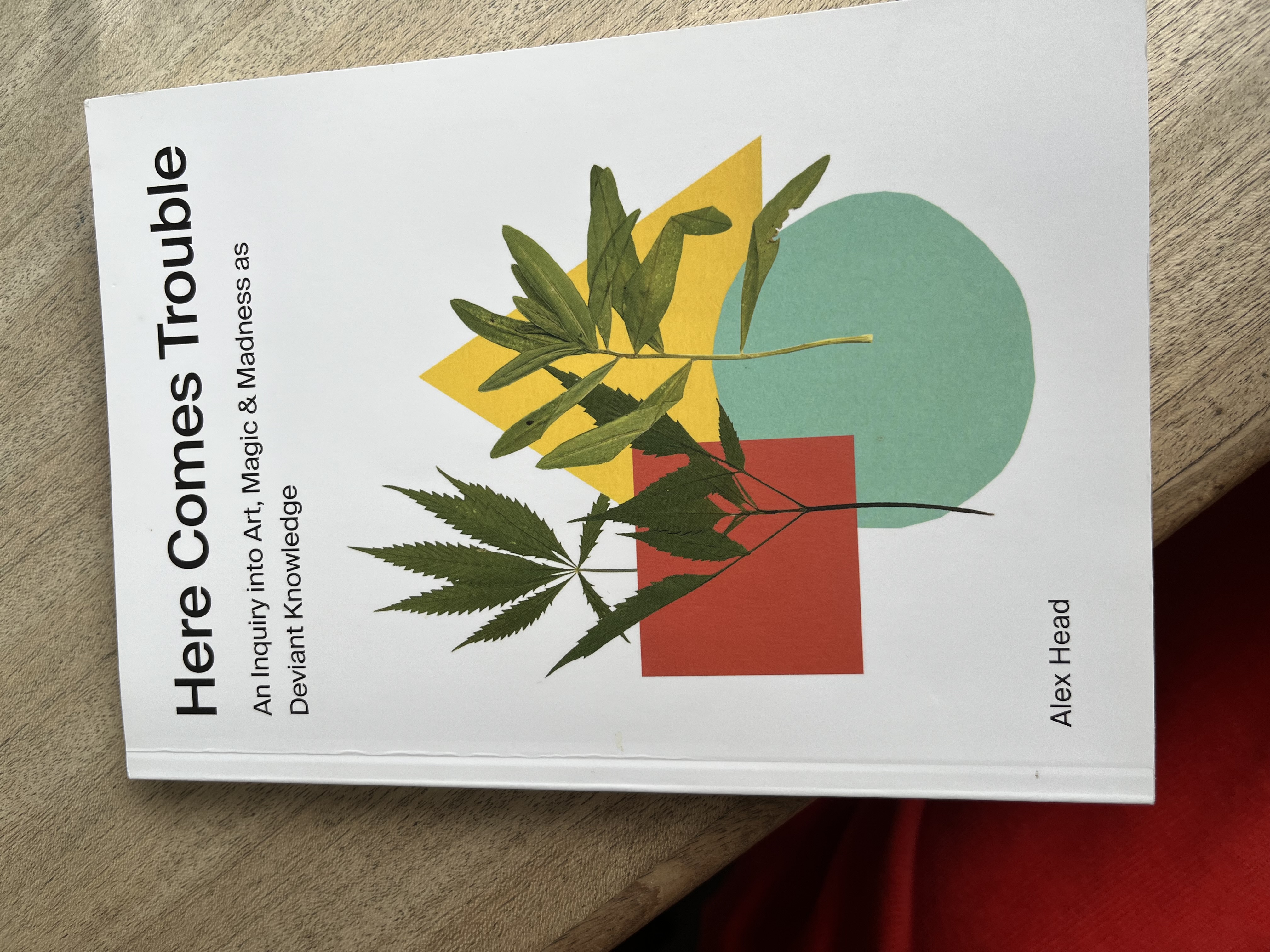



Images: Mixed AI-generated and hand drawn images (Yamada-Rice)